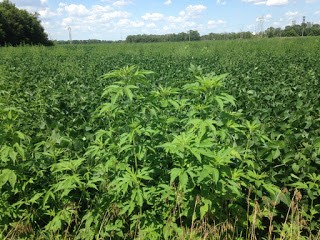Jeffrey L. Gunsolus Extension Agronomist-Weed Science
The combination of a long duration of wet weather and advanced growing degree days has created serious weed management challenges for many corn and soybean growers. Due to the impending June 20th cutoff date for approved dicamba formulations on Xtend soybean and weeds moving into their rapid growth phase, most of the questions I am receiving, and I hope to address, are focused on soybean.
Fields without a preemergence herbicide are the most challenging
The most serious situations are in fields where no preemergence residual herbicide was applied. This often results in multiple weed species with a broad range of weed heights. In such situations please realize that there are no perfect solutions.Due to their early emergence period, common lambsquarters and common and giant ragweed control will be especially challenging. The good news is that working a field later in the growing season reduces the density of these weed species as their germination tapers off in late May to early June.
Prioritizing these fields is critical, because if you wish to achieve the maximum weed control potential for any of the postemergence herbicides, you need to target weeds at a 4-inch height or less. Therefore, full labeled rates and plant coverage are critical as tall weeds can shelter smaller weeds and contact herbicides such as Liberty, Flexstar and Cobra need higher gallon per acre rates and finer spray droplets than you would consider when using glyphosate or dicamba.
Read more »

